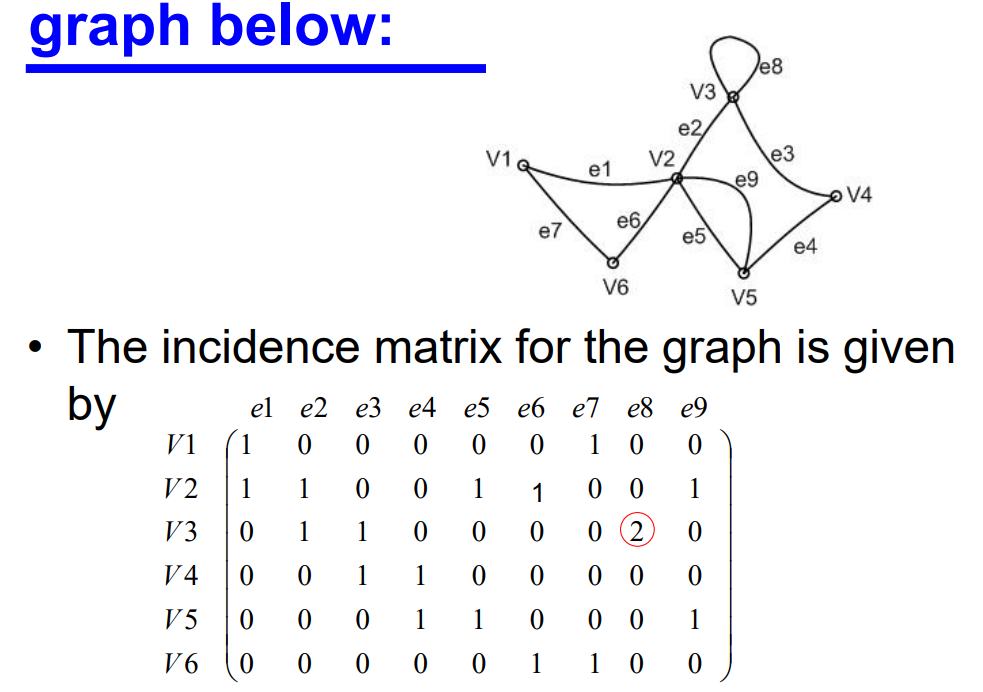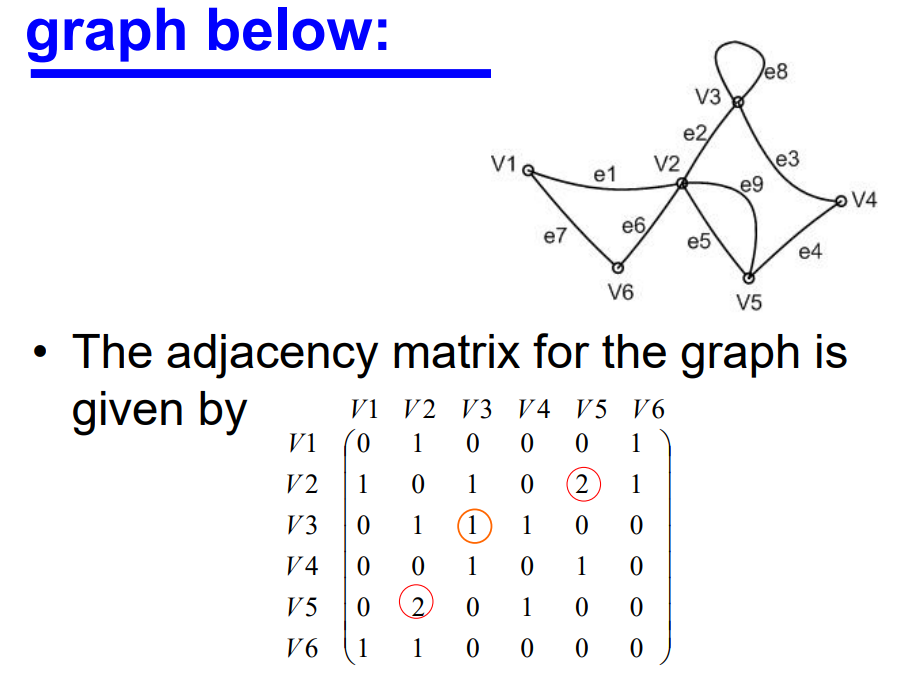CPT102小豪的笔记
自学笔记
1. java的常用容器接口
1.1 Collection
Collection接口是Java集合框架的根接口,它定义了许多用于操作和管理集合的方法。Collection接口提供了一组通用的行为,可以用于操作各种类型的集合,如列表(List)、集(Set)和队列(Queue)等。
- isEmpty(): 返回是否为空
- size(): 返回已包含元素的数量
- contains(E elem): 返回是否包含某个元素
- add(E elem): 在尾部添加一个对象作为元素,返回操作状态
- remove(E elem): 移除一个元素,返回操作状态
- iterator():返回一个迭代器
- clear(): 利用迭代器清空集合
- addall(Collection): 合并两Collection
- removeAll(Collection): 移除所有位于两Collection交集里的所有元素
- containsAll(Collection): 返回是否包含这个Collection的所有元素
1.2 List
继承自Collection
List的函数:
- add()
- clear()
- size()
- isEmpty()
- get(i)
- set(i,val)
1.3 Stack
stack没有接口只有实现,是一个类
- push()
- pop() (返回栈顶元素并删除)
- peek()
- empty()
- clear()
1.4 Queue
Queue的接口要定义成Queue q = new LinkedList();
是Linkedlist的实现
- add()
- remove()删除并返回队头
- isEmpty()
- size()
- clear()
- peek()
priorityqueue是queue的实现,是一个优先队列,可以自定义优先级
默认是小根堆,在定义之后加coolections.reverseOrder()可以变成大根堆
1.5 Set
et接口的实现有Treeset(平衡树有序)和Hashset(无序)
Treeset 的增删查改都是logn的复杂度,而hashset是O(1)的复杂度实现treeset 定义变量要使用treeset:
TreeSet<Integer> ts = new TreeSet<Integer>();
Treeset里的两个函数:
ceiling和floor 分别返回大于等于key的最小元素和小于等于key的最大元素没有重复的元素
1.6 Map
- HashMap
- TreeMap
函数有:
-
put(key,value)
-
get(key)
-
containsKey(key)
-
remove(key) size()
-
isEmpty()
-
entrySet() 用来遍历map中的元素
-
Map.Entry<key, value> :map中的对象类型
遍历map的代码
for(Map.Entry<Integer, Integer> entry : map.entrySet()) {
int key = entry.getKey();
int value = entry.getValue(); }
TreeMap中也有floorentry和ceilingentry函数
1.7 Abstraction
抽象数据结构,定义了一个数据结构的接口,数据结构的功能,不关心具体的实现 可以映射到java的interface
比如 collection,list,set,queue,map
ArrayList,LinkedList,HashSet,TreeSet,PriorityQueue,HashMap,TreeMap 这些则是这些接口具体的实现
泛型 generic type 用来定义数据结构中储存的数据的类型,比如
ArrayList<Integer> al = new ArrayList<Integer>();
这样定义的arraylist只能储存integer类型的数据
Interfaces没有具体的构造器,所以不能直接new一个interface的对象,但是可以new一个interface的实现类的对象,比如
List<Integer> list = new ArrayList<Integer>();
ArrayList是一个具体的类,List是一个接口
1.8 Iterator
Iterator是Java集合框架中的一个接口,用于遍历集合中的元素。
所有Collection类都可以使用迭代器
List接口中的iterator()方法返回一个Iterator实例,用于遍历List中的元素。Iterator的实现包括以下方法:
hasNext(): 返回boolean值,表示集合中是否还有更多元素。
next(): 返回集合中的下一个元素。在调用此方法之前,应先调用hasNext()方法检查是否还有下一个元素。
remove(): 从集合中删除迭代器最近返回的元素。此方法在迭代过程中可以安全地修改集合。通常,在调用next()方法后调用此方法。
带有iterator的类型能够使用foreach循环,同时foreach循环就是iterator的另一种写法
for (Integer i : list) { System.out.println(i);
}
Iterator<Integer> it = list.iterator(); while (it.hasNext()) {
System.out.println(it.next()); }
//自定义数据结构实现的iterator
public class ARSet<T> implements Iterable<T> { private T[] items;
private int size;
/**
* Create an empty set. */
@SuppressWarnings("unchecked")
public ARSet() {
items = (T[]) new Object[100]; size = 0;
}
private class ARSetIterator implements Iterator<T> { private int wizPos;
public ARSetIterator() {
wizPos = 0; }
@Override
public boolean hasNext() {
return wizPos < size }
@Override
public T next() {
T returnItem = items[wizPos]; wizPos += 1;
return returnItem; }
}
}
//类继承了Iterable接口之后,内部迭代器实现iterator方法
1.9 Comparable 和 Comparator
Comparable 和 Comparator 都是 Java 中用于比较对象的接口。这两者的主要区别在于它们的使用场景和实现方式。
所有Collection类都可以使用比较器
Comparable 是一个需要在要比较的对象类中实现的接口。如果类的实例具有自然顺序,如整数、字符串等,通常会实现 Comparable 接口。实现 Comparable 接口意味着类的对象可以与其他相同类型的对象进行比较。
Comparator 则是一个单独的接口,用于定义一种特定的比较规则。它通常用于在排序或搜索时自定义比较规则,而不必修改要比较的对象类。这在你无法修改原始类,或需要根据多种条件对对象进行排序时非常有用。
public class Person implements Comparable<Person> {
private String name;
private int age;
public Person(String name, int age) { this.name = name;
this.age = age; }
public String getName() { return name;
}
public int getAge() { return age;
}
@Override
public String toString() {
return "Person{name='" + name + "', age=" + age + "}"; }
@Override
public int compareTo(Person other) {
return this.name.compareTo(other.name); }
}
public class ComparableExample {
public static void main(String[] args) {
List<Person> people = new ArrayList<>();
people.add(new Person("Alice", 30));
people.add(new Person("Bob", 25));
people.add(new Person("Charlie", 35));
System.out.println("Before sorting by name: " + people);
Collections.sort(people);
System.out.println("After sorting by name: " + people);
}
}
// 这是一个Comparable的例子
import java.util.Comparator;
public class AgeComparator implements Comparator<Person> {
@Override
public int compare(Person p1, Person p2) {
return Integer.compare(p1.getAge(), p2.getAge());
}
}
1.10 Tree
Java中的Tree(树)是一种常见的数据结构,它是由节点(Node)组成的层次结构。每个节点可以有零个或多个子节点,但每个节点只能有一个父节点(除了根节点)。树的一个重要特性是,从根节点到任何一个节点都存在唯一的路径。
在Java中,树的表示通常通过类和对象来实现。以下是一个简单的示例,展示如何在Java中表示一个树:
class TreeNode {
private int data;
private List<TreeNode> children;
public TreeNode(int data) {
this.data = data;
this.children = new ArrayList<>();
}
public int getData() {
return data;
}
public List<TreeNode> getChildren() {
return children;
}
public void addChild(TreeNode child) {
children.add(child);
}
}
public class TreeExample {
public static void main(String[] args) {
// 创建树的节点
TreeNode root = new TreeNode(1);
TreeNode child1 = new TreeNode(2);
TreeNode child2 = new TreeNode(3);
TreeNode grandchild1 = new TreeNode(4);
// 构建树的结构
root.addChild(child1);
root.addChild(child2);
child1.addChild(grandchild1);
// 遍历树
traverseTree(root);
}
public static void traverseTree(TreeNode node) {
System.out.println(node.getData());
List<TreeNode> children = node.getChildren();
for (TreeNode child : children) {
traverseTree(child);
}
}
}
Java集合框架中的TreeSet和TreeMap,用于实现不同类型的树结构。
Terminology
- Level: Equivalent to the “row” that a value is in
- Depth: The number of levels in the tree
- Leaf Nodes A node with no children
- Non-leaf Nodes
- Balanced: All leaf nodes are on levels n and (n+1), for some value of n (and are grouped on the bottom level “to the left”)
2. java的常用类
2.1 ArrayList
public class ArrayList<T> {
private static final int DEFAULT_CAPACITY = 10;
private T[] elements;
private int size;
public ArrayList() {
elements = (T[]) new Object[DEFAULT_CAPACITY];
size = 0;
}
public int size() {
return size;
}
public boolean isEmpty() {
return size == 0;
}
public T get(int index) {
if (index < 0 || index >= size) {
throw new IndexOutOfBoundsException("Invalid index: " + index);
}
return elements[index];
}
public void add(T item) {
if (size == elements.length) {
resize(2 * elements.length);
}
elements[size++] = item;
}
public T remove(int index) {
if (index < 0 || index >= size) {
throw new IndexOutOfBoundsException("Invalid index: " + index);
}
T item = elements[index];
for (int i = index; i < size - 1; i++) {
elements[i] = elements[i + 1];
}
size--;
if (size > 0 && size == elements.length / 4) {
resize(elements.length / 2);
}
return item;
}
private void resize(int newCapacity) {
T[] newElements = (T[]) new Object[newCapacity];
for (int i = 0; i < size; i++) {
newElements[i] = elements[i];
}
elements = newElements;
}
}
这个实现包括以下基本操作及其时间复杂度:
size():返回列表中的元素数量。时间复杂度是 O(1)。isEmpty():检查列表是否为空。时间复杂度是 O(1)。
get(int index):获取列表中指定位置的元素。时间复杂度是 O(1)。
add(T item):在列表末尾添加一个元素。平均时间复杂度是 O(1),因为在数组需要扩容时会有 O(n) 的操作,但扩容操作的频率随着元素数量的增长而降低,根据均摊复杂度,该操作的复杂度仍为 O(1)。
remove(int index):从列表中移除指定位置的元素。最坏情况下的时间复杂度是 O(n),因为在移除元素后,可能需要将后续元素向前移动。类似地,在数组需要缩容时会有 O(n) 的操作,但这种情况发生的频率较低。
这个实现采用动态数组(数组大小可变)作为底层数据结构。当数组满时,它会自动扩大为原来的两倍;当数组元素数量小于四分之一时,它会缩小为原来的一半。这种自动调整大小的策略可以确保ArrayList 的空间效率。
注:这只是一个简化版的java底层ArrayList
提到了ensureCapacity这个方法,就是上面代码段的resize方法
Arraylist是一个动态长度的数组,在底层,它的这种动态长度其实由数组维护,一开始Arraylist是一个长度为4的数组,当被填满时,会触发他的扩容机制,本质上这个扩容机制是新建一个2*原本length长度的数组,然后将旧数组的元素复制到新数组中,然后将旧数组的引用指向新数组,这样就完成了扩容。这样的坏处是很可能会造成内存的浪费。
ArrayList和array的区别
- 动态性:ArrayList可以动态的增加和删除元素,而array的长度是固定的
- 类型:array只能储存一种基本数据类型的数据(如int,char等),而arraylist可以储存不同类型的数据(包括基本数据类型和引用对象类型,加上了泛型之后就只能储存一种特定的类型了)
- 性能:Array通常比ArrayList有更好的性能,因为Array没有使用额外的对象(如ArrayList的size、capacity等属性)和方法(如add、remove等),也不需要自动扩容。
- 内存使用:Array在内存上更紧凑,因为它不需要额外的内存来维护数据结构。ArrayList在内存上占用更多空间,因为它需要维护额外的属性和方法。
2.2 LinkedList
public class SinglyLinkedList<T> {
private Node<T> head;
private int size;
private static class Node<T> {
private T data;
private Node<T> next;
public Node(T data, Node<T> next) {
this.data = data;
this.next = next;
}
}
public SinglyLinkedList() {
head = null;
size = 0;
}
public void addFirst(T item) {
Node<T> newNode = new Node<>(item, head);
head = newNode;
size++;
}
public void addLast(T item) {
Node<T> newNode = new Node<>(item,null);
if (isEmpty()) {
head = newNode;
} else {
Node<T> current = head;
while (current.next != null) {
current = current.next;
}
current.next = newNode;
}
size++;
}
public T removeFirst() {
if (isEmpty()) {
throw new RuntimeException("List is empty.");
}
T item = head.data;
head = head.next;
size--;
return item;
}
public void insert(int index, T item) {
if (index < 0 || index > size) {
throw new IndexOutOfBoundsException("Invalid index: " + index);
}
if (index == 0) {
addFirst(item);
return;
}
Node<T> newNode = new Node<>(item,
null);
Node<T> current = head;
for (int i = 0; i < index - 1; i++) {
current = current.next;
}
newNode.next = current.next;
current.next = newNode;
size++;
}
public int size() {
return size;
}
public boolean isEmpty()
{
return size == 0;
}
}
此实现包含以下基本操作及其时间复杂度:
addFirst(item):在链表头部添加一个元素。时间复杂度是 O(1),因为只需将新节点添加到链表的头部,然后更新头部指针。
addLast(item):在链表尾部添加一个元素。时间复杂度是 O(n),因为需要遍历链表以找到尾部节点并添加新节点。
removeFirst():从链表头部移除一个元素。时间复杂度是 O(1),因为只需更新头部指针并返回移除的元素。
size():返回链表中的元素数量。时间复杂度是 O(1),因为我们使用了一个变量来维护链表大小。
isEmpty():检查链表是否为空。时间复杂度是 O(1),因为我们只需检查链表大小是否为0。
insert方法将一个元素插入到链表的指定位置。请注意,该方法在以下情况下的时间复杂度为:
-
插入元素到链表头部(index为0):时间复杂度为 O(1),因为只需将新节点添加到链表头部,然后更新头部指针。
-
插入元素到链表尾部(index为size):时间复杂度为 O(n),因为需要遍历链表以找到尾部节点并添加新节点。
-
插入元素到链表中间:时间复杂度为 O(n),因为需要遍历链表以找到目标位置并插入新节点。
2.3 LinkedStack
public class LinkedStack<T> {
private Node<T> top;
private int size;
private static class Node<T> {
private T data;
private Node<T> next;
public Node(T data, Node<T> next) {
this.data = data;
this.next = next;
}
}
public LinkedStack() {
top = null;
size = 0;
}
public void push(T item) {
Node<T> newNode = new Node<>(item,
top);
top = newNode;
size++;
}
public T pop() {
if (isEmpty())
{
throw new RuntimeException("Stack is empty.");
}
T item = top.data;
top = top.next;
size--;
return item;
}
public T peek() {
if (isEmpty())
{
throw new RuntimeException("Stack is empty.");
}
return top.data;
}
public int size() {
return size;
}
public boolean isEmpty()
{
return size == 0;
}
}
以下是各个操作的时间复杂度分析:
push(item):向堆栈顶部添加一个元素。时间复杂度是 O(1),因为只需将新节点添加到链表的头部,然后更新头部指针。
pop():从堆栈顶部移除一个元素。时间复杂度是 O(1),因为只需更新头部指针并返回移除的元素。
peek():查看堆栈顶部的元素,而不实际移除它。时间复杂度是 O(1),因为只需返回头部节点的数据。
size():返回堆栈中的元素数量。时间复杂度是 O(1),因为我们使用了一个变量来维护堆栈大小。
isEmpty():检查堆栈是否为空。时间复杂度是 O(1),因为我们只需检查堆栈大小是否为0。
2.4 LinkedQueue
public class LinkedQueue<T> {
private Node<T> front;
private Node<T> rear;
private int size;
private static class Node<T> {
private T data;
private Node<T> next;
public Node(T data, Node<T> next) {
this.data = data;
this.next = next;
}
}
public LinkedQueue() {
front = null;
rear = null;
size = 0;
}
public void enqueue(T item) {
Node<T> newNode = new Node<>(item, null);
if (isEmpty()) {
front = newNode;
} else {
rear.next = newNode;
}
rear = newNode;
size++;
}
public T dequeue() {
if (isEmpty()) {
throw new RuntimeException("Queue is empty.");
}
T item = front.data;
front = front.next;
if (front == null) {
rear = null;
}
size--;
return item;
}
public T peek() {
if (isEmpty()) {
throw new RuntimeException("Queue is empty.");
}
return front.data;
}
public int size() {
return size;
}
public boolean isEmpty()
{
return size == 0;
}
}
以下是各个操作的时间复杂度分析:
enqueue(item):在队列尾部添加一个元素。时间复杂度是 O(1),因为只需将新节点添加到链表的尾部,然后更新尾部指针。
dequeue():从队列前端移除一个元素。时间复杂度是 O(1),因为只需更新前端指针并返回移除的元素。
peek():查看队列前端的元素,而不实际移除它。时间复杂度是 O(1),因为只需返回前端节点的数据。
size():返回队列中的元素数量。时间复杂度是 O(1),因为我们使用了一个变量来维护队列大小。
isEmpty():检查队列是否为空。时间复杂度是 O(1),因为我们只需检查队列大小是否为0。
2.5 ArraySet
Arrayset是一个实现了Set接口的类,它的底层是一个array,所以它的元素是有序的,但是它的元素不能重复。
三个操作:
contains方法的时间复杂度是O(N),因为它是遍历整个array来查找元素的。
Add(value)操作的时间复杂度是O(N),因为它需要遍历整个array来查找是否已经存在value,如果不存在则添加到array的最后。
remove(value)操作的时间复杂度是O(N),因为它需要遍历整个array来查找value,如果存在则删除。如何让ArraySet更快?
使用BinarySearch,但需要让Array是sorted的,所以需要在add的时候进行排序,这样add的时间复杂度就变成了O(NlogN),但是contains的复杂度是O(logN)。
SortedArraySet
If you have to call add() and/or remove() many items, then SortedArraySet is no better than ArraySet
public SortedArraySet(Collection <E> col){
// Make space
count=col.size();
data = (E[]) new Object[count];
// Put items from collection into the data array.
col.toArray(data);
// sort the data array.
Arrays.sort(data);
}
2.6 Tables (Maps)
- indexed container
- Associate information with a key – key is often a character string – info is any information
- Typical Operations on Tables void insert(string key, Object o); object lookup(string key); void remove(string key);
- Alternative implementations include
- Search Lists
- Binary Search Trees
- Hash Tables
2.7 Binary Search Tree
- A binary search tree is a binary tree where each node has a key
- The key in the left child (if exists) of a node is less than the key in the parent
- The key in the right child (if exists) of a node is greater than the key in the parent
- The left & right subtrees of the root are again binary search trees
- for each node n, with key k
- n->left contains only nodes with keys < k
- n->right contains only nodes with keys > k
- O(log N) in average for insert, lookup, and remove
- operations can degenerate to O(N) – worst case!
2.8 AVL Trees (Adelson-Velskii and Landis)
- A node is only allowed to possess one of three possible states:
- Left-High (balance factor -1) The left-sub tree is one level taller than the right-sub tree
- Balanced (balance factor 0) The left and right sub-trees both have the same heights
- Right-High (balance factor +1) The right sub-tree is one level taller than the left-sub tree
- If the balance of a node becomes -2 or +2 it will require rebalancing.
- This is achieved by performing a rotation about this node
- Rotation does not break the existing properties for a search tree
| Algorithm | Average | Worst case |
|---|---|---|
| Search | O(log n) | O(log n) |
| Insert | O(log n) | O(log n) |
| Delete | O(log n) | O(log n) |
| Space | O(n) | O(n) |
2.9 Binary Tree ADT
public interface BinaryTree<T> {
BinaryTree<T> BinaryTree(T value);
BinaryTree<T> getLeft();
BinaryTree<T> getRight();
void setLeft(BinaryTree<T> subtree);
void setRight(BinaryTree<T> subtree);
BinaryTree<T> find(T value);
boolean contains(T value);
boolean isEmpty();
boolean isLeaf();
int size();
}
2.10 Hash Tables
- O(1) in average for insert, lookup, and remove
- use an array named T of capacity N
- define a hash function that returns an integer int H(string key)
- must return an integer between 0 and N-1
- store the key and info at T[H(key)]
- H() must always return the same integer for a given key
Hash Function
- A hash function is any well-defined procedure or mathematical function for turning data into an index into an array.
- The values returned by a hash function are called hash values or simply hashes.
- A hash function H is a transformation that
- takes a variable-size input k and
- returns a fixed-size string (or int), which is called the hash value h (that is, h = H(k))
- In general, a hash function may map several different keys to the same hash value.
2.11 Binary Min-Heap
Binary Min-Heap(二叉最小堆)是一种基于完全二叉树的数据结构,其中每个节点的值都小于或等于其子节点的值。在二叉最小堆中,最小的元素位于根节点。
增加操作:
- 首先,将要插入的元素添加到堆的最后一个位置。
- 执行向上调整操作(也称为上浮操作)。从插入位置开始,将该元素与其父节点进行比较。如果当前元素小于其父节点,就将它与父节点交换位置。然后,将交换后的元素作为当前元素,继续向上比较和交换,直到满足二叉最小堆的性质为止。
删除操作:
- 首先,找到要删除的元素。为了保持二叉最小堆的性质,通常删除的是堆顶元素,即根节点。
- 将堆的最后一个元素移动到堆顶位置。将堆的最后一个元素替换为要删除的元素。
- 执行向下调整操作(也称为下沉操作)。从堆顶开始,与其两个子节点中较小的节点进行比较。如果当前节点大于子节点中的最小值,就将它与较小的子节点交换位置。然后,将交换后的节点作为当前节点,继续向下比较和交换,直到满足二叉最小堆的性质为止。
3. Graph
-
A graph G consist of :
- a finite set of vertices V(G), which cannot be empty,
- and a finite set of edges E(G), which connect pairs of vertices.
-
The number of vertices in G is called the order of G, denoted by |V|.
-
Two vertices are adjacent if they are joined by an edge.
-
Adjacent vertices are said to be neighbors.
-
The edge which joins vertices is said to be incident to them
-
Two or more edges joining the same pair of vertices are multiple edges.
-
An edge joining a vertex to itself is called a loop.
-
A graph containing no multiple edges or loops is called a simple graph
-
Degree
-
The number of times edges are incident to a vertex V is called its degree, denoted by d(V).
-
The degree sequence of a graph consists of the degrees of the vertices written in nonincreasing order, with repeats where necessary.
-
The sum of the values of the degrees, d(V), over all the vertices of a simple graph is twice the number of edges:
∑ i d ( V i ) = 2 ∣ E ∣ \sum_{i} d\left(V_{i}\right)=2|E| ∑id(Vi)=2∣E∣
-
A vertex of a digraph has an in-degree of d-(V) and an out-degree d+(V).
∑ i d − ( V i ) = ∣ A ∣ ∑ i d + ( V i ) = ∣ A ∣ \begin{array}{l} \sum_{i} d_{-}\left(V_{i}\right)=|A| \\ \sum_{i} d_{+}\left(V_{i}\right)=|A| \end{array} ∑id−(Vi)=∣A∣∑id+(Vi)=∣A∣
Subgraphs
- A subgraph of G is a graph, H, whose vertex set is a subset of G’s vertex set, and whose edge set is a subset of the edge set of G.
- If a subgraph H of G spans all of the vertices of G, i.e. V(H) = V(G), then H is called a spanning subgraph of G.
##3.1 Path
- A sequence of edges of the form VsVi , ViVj , VjVk , VkVl , VlVt is a walk from Vs to Vt .
- If these edges are distinct then the walk is called a trail, and
- if the vertices are also distinct then the walk is called a path.
- A walk or trail is closed if Vs = Vt .
- A closed walk in which all the vertices are distinct except Vs and Vt , is called a cycle or a circuit.
- The number of edges in a walk is called its length.
Connected graphs
- A graph G is connected if there is a path from any one of its vertices to any other vertex.
- A disconnected graph is said to be made up of components.
the incidence matrix
The incidence matrix of a graph G is a |V| × |E| matrix A.
The element aij = the number of times that vertex Vi is incident with the edge ej

the adjacency matrix
- The adjacency matrix of a graph G is a |V| × |V| matrix A.
- The element aij = the number of edges joining Vi and Vj

4. Trees and forests
-
A tree is a connected graph with no cycles.
-
A forest is a graph with no cycles and it may or may not be connected
-
If a tree T has at least two vertices then it has the following properties:
-
There is exactly one path from any vertex Vi in T to any other vertex Vj
-
The graph obtained from tree T by removing any edge has two components, each of which is a tree.
-
|E| = |V| - 1
更多推荐
 已为社区贡献3条内容
已为社区贡献3条内容







所有评论(0)